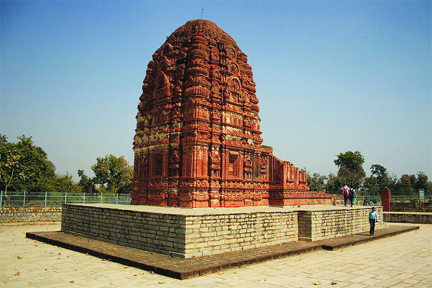Chhattisgarh is a landlocked state in Central India. It is the ninth largest state by area, and with a population of roughly 30 million, the seventeenth most populous. It borders seven states – Uttar Pradesh to the north, Madhya Pradesh to the northwest, Maharashtra to the southwest, Jharkhand to the northeast, Odisha to the east, Andhra Pradesh and Telangana to the south. Formerly a part of Madhya Pradesh, it was granted statehood on 1 November, 2000, with Raipur as the designated state capital.
Chhattisgarh is one of the fastest-developing states in India. Its Gross State Domestic Product (GSDP) is Rs 5.09 lakh crore (US$64 billion) (2023-24 est.), with a per capita GSDP of Rs152,348 (US$1,900) (2023-24 est.). A resource-rich state, it has the third largest coal reserves in the country and provides electricity, coal, and steel to the rest of the nation. It also has the third largest forest cover in the country after Madhya Pradesh and Arunachal Pradesh with over 40% of the state covered by forests.
Chhattisgarh boasts a unique position that has facilitated cultural exchanges throughout history. This region’s heritage resonates with echoes of ancient civilizations and dynasties, each leaving an indelible mark on its identity. The vibrant tapestry of Chhattisgarh’s culture is woven with threads of traditional festivals, intricate art forms, and resplendent architecture.
Economy
Chhattisgarh’s nominal gross state domestic product (GSDP) is estimated at Rs 5.09 lakh crore (US$64 billion) in 2023-24, the 17th largest state economy in India. The economy of Chhattisgarh recorded a growth rate of 11.2% in 2023-24. Chhattisgarh’s success factors in achieving high growth rate are growth in agriculture and industrial production.
Agriculture
Agriculture is counted as the chief economic occupation of the state. According to a government estimate, net sown area of the state is 4.828 million hectares and the gross sown area is 5.788 million hectares. Horticulture and animal husbandry also engage a major share of the total population of the state. About 80% of the population of the state is rural and the main livelihood of the villagers is agriculture and agriculture-based small industry.
The majority of the farmers are still practicing the traditional methods of cultivation, resulting in low growth rates and productivity. The farmers have to be made aware of modern technologies suitable to their holdings. Providing adequate knowledge to the farmers is essential for a better implementation of the agricultural development plans and to improve productivity.
